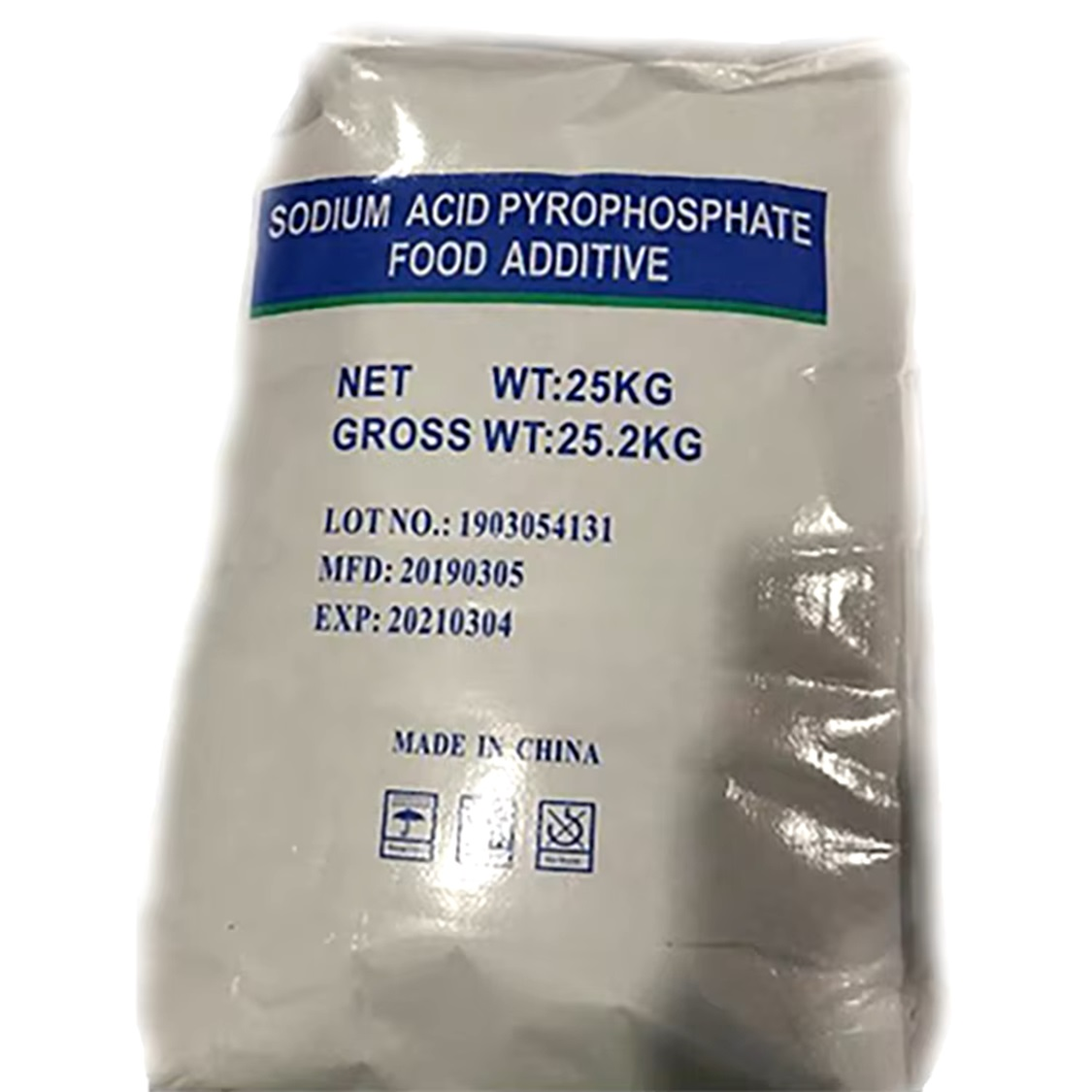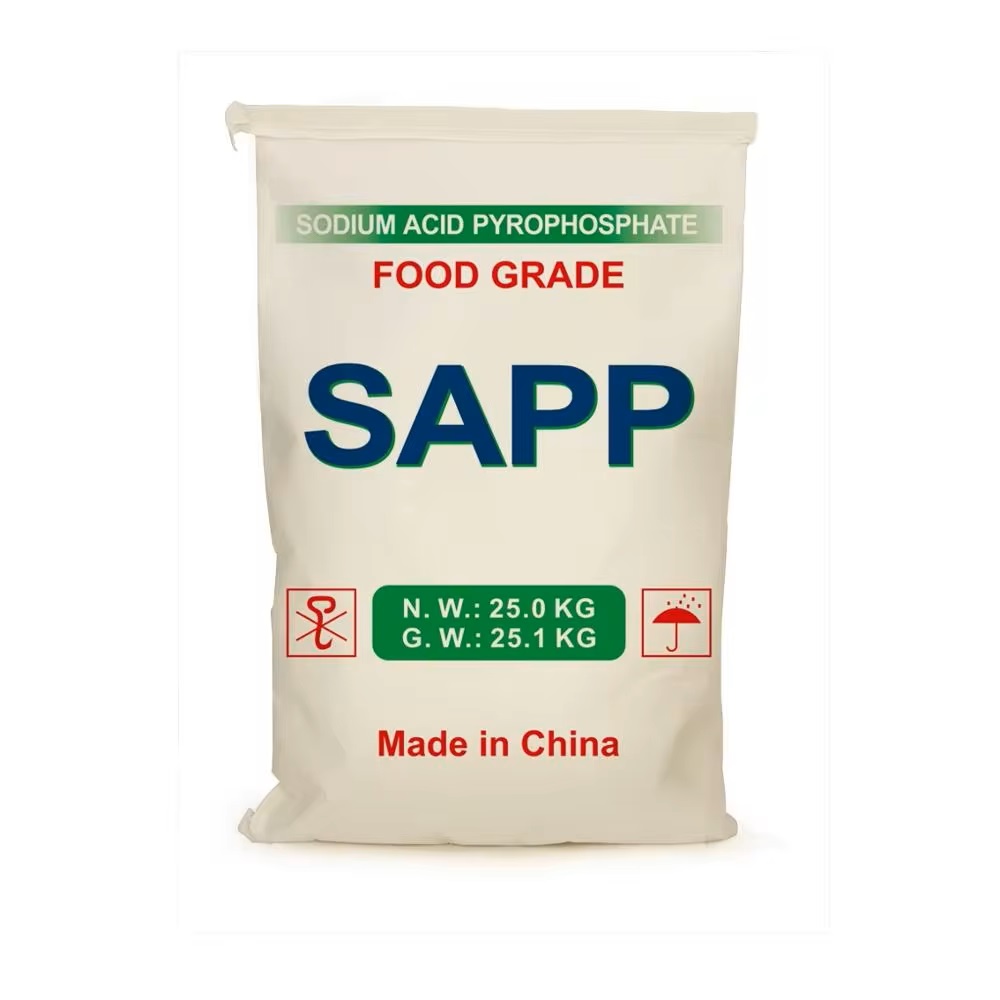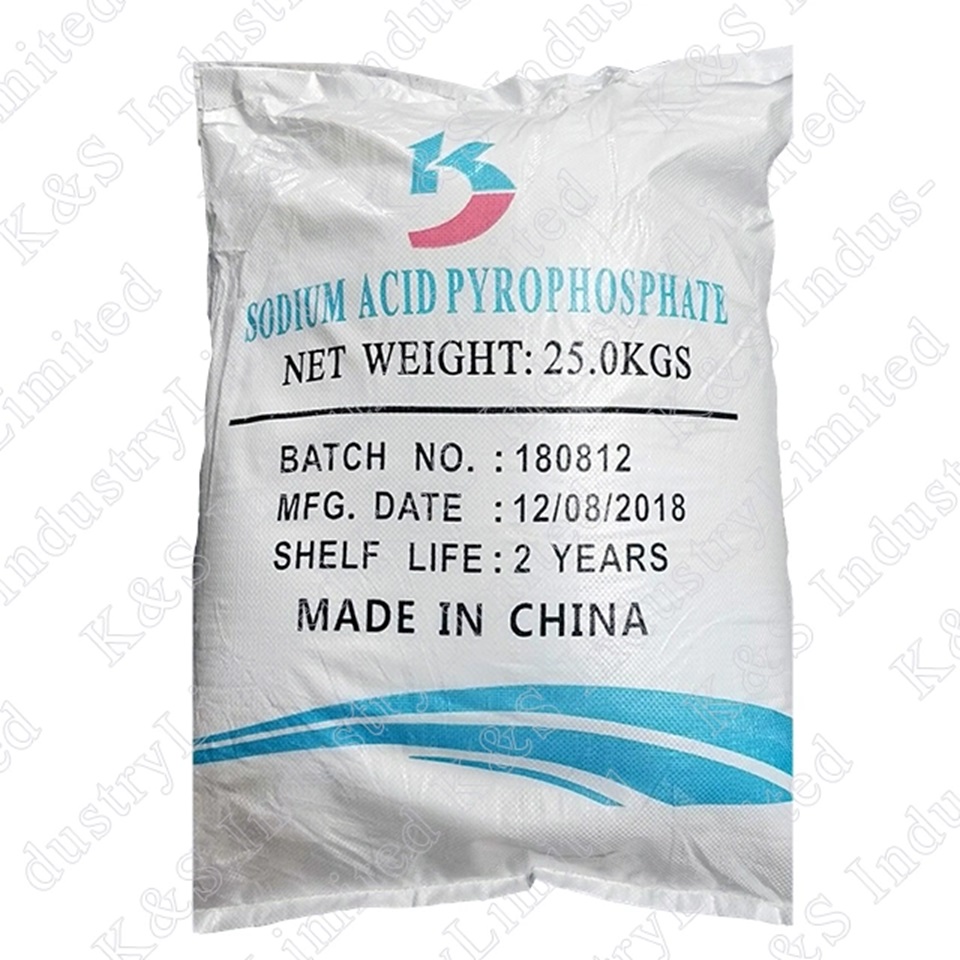We unleash your business potential by maximize the business innovation.
Send EmailE450, Sodium Acid Pyrophosphate, SAPP, Disodium Pyrophosphate, di-sodium dihydrogen pyrophosphate anhydrous, SODIUM ACID PYROPHOSPHATE, SSAPP, 7758-16-9
Molecular Formula (Sodium Acid Pyrophosphate); Na2H2P2O7
Molecular Weight; 221.936 g/mol
CAS Number; 7758-16-9
Sodium Acid Pyrophosphate or Disodium Pyrophosphate is in the phosphate group chemicals. It is one of the edible phosphorus salts that prevents food coloring and helps the leavening process in foods.
It is also generally called Disodium Diphosphate.
Sodium Acid Pyrophosphate E Code = E 450
Other Names :
Disodium Pyrophosphate
Polyphosphoric Acids, Sodium Salts
Disodium Dihydrogen Pyrophosphate
Sodium Polyphosphate
Diphosphoric Acid, Sodium Salt
Disodium Dihydrogen Diphosphate
SAPP
Disodium Diphosphate
E 450
Polyphosphoric Acids, Sodium Salts
Pyrophosphoric Acid, Disodium Salt
Disodium [Hydroxy (oxido) phosphoryl] Hydrogen Phosphate
Disodium
Physical and Chemical Properties :
It is a white powder and crystal structure. It is in a lump structure. It is an odorless compound.
It is a chemical that can be dissolved in water.
Sodium Acid Pyrophosphate (SAPP) has a pH range between 3.7 and 5.0. (in a 1% solution)
Its melting point is above 600 °C.
It is artificial and stable in terms of stability.
Its density is 1.1-1.3 g/mlt.
SAPP has a solubility of approximately 11.9 g in 100 grams of water at 0 °C.
Its boiling point is unknown.
Its shelf life is approximately 2 years. After this period, it loses its functionality.
Sodium Acid Pyrophosphate Usage Areas:
Sodium acid pyrophosphate is used to determine the rates of fermentation reactions in the cooking industry.
It is used to provide pH balance in foods due to its pH regulating properties.
It is used in canned foods, seafood, frozen fish fillets, frozen shelled fruits. Its purpose of use here is as a buffering and chelating chemical.
It is used in cakes, wafers, cake dough, cooled dough, baking flours and mixtures.
It is used as a sequestration agent in the processing of potato products.
It is used to color the meat and body of hot dogs.
In the processing of crab meat, Sodium Tripolyphosphate, water and SAPP 28 are used to increase the shear strength that occurs when cutting the crab in solutions at pH 4.5, pH 5.5. Cooking loss has decreased to a minimum level in solutions at pH 5.5. It is used for this purpose.
It is used in the production of cooked meat products to retain water (water retainer).
It is used as a strengthening agent in foods, to make sausages firmer, less oily, to provide salt, smoke and spice additives in sausage products. Sodium Acid Pyrophosphate (SAPP) intensifies sour tastes and reduces odors.
It is used in the formulations of drugs produced to prevent kidney stones.
It is used in the production of drugs used for skin treatment.
It is used to ensure the growth of enterotoxin.
In the production of liquid carpet shampoo, Sodium Acid Pyrophosphate (SAPP) is used as an alkali chemical together with SLS (Sodium Lauryl Sulfate).
Its use in chicken carcasses increases the shelf life by 1 or 2 days. Sodium Tripolyphosphate is also used.
It is used in milk and leather production. In leather production, it is used to remove iron stains on the belt in the leather. In milk production, it has important effects for cleaning when mixed with Sulfamic Acid.
It is used as chemical stabilization, for metal cleaning and in mud drilling.
It is used in oil well drilling operations. It is used for hydraulic fracturing operations and in the production of treatment fluids in the oil field.
It is also used in oil production. The purpose of use of Sodium Acid Pyrophosphate (SAPP) here is as a dispersant in oil well drilling muds.
It is used as a sequestrant agent to prevent darkening in food products containing multivalent metal ions such as potatoes and to ensure the removal of metal ions by creating a complex structure.





